Methamphetamine, commonly known as meth, is a highly addictive drug that can have deeply negative consequences on people and communities. Its popularity as a drug of abuse has led to many street names for meth, used to refer to it colloquially or in secret.
Understanding meth’s street names is crucial for identifying drug use early and offering timely support to close friends and family members in need.
What is Methamphetamine?
Methamphetamine is a powerful stimulant with a high potential for abuse and addiction. While initially developed for medical use, meth is now most manufactured and sold illegally.
Its effects include heightened energy, euphoria, and alertness, but these come with severe consequences, such as addiction, cognitive impairment, and organ damage.
Common Street Names for Meth
Given how widespread the illegal manufacture and distribution of meth is throughout the U.S., there are many colloquial and coded names for it. This is an overview of the most common ones.
General Slang Terms for Meth
Methamphetamine is known by various names, often reflecting its appearance, form, or effects. Common terms include:
- Ice: Refers to the crystalline form of meth, resembling shards of glass.
- Crystal: A shorthand for “crystal meth.”
- Glass: Describes its translucent, glass-like appearance when in crystal form.
- Speed: Used to describe meth in its powdered form.
- Crank: Often refers to low-quality meth or its use in motorcycling communities.
Other common names for crystal meth include Tina, hot ice, ice cream, L.A. ice, L.A. glass, shaved ice, super ice, shards, quartz, frio, cri-cri, and shatter.
Other names for powder meth include chalk, chicken powder, soap dope, Hawaiian salt, walking zombie, zip, fizz, nails and one pot.
These terms can vary depending on the context and often conceal meth use from casual listeners. Additionally, street names for meth can change depending on the region or community.
Slang Terms for Meth Combined With Other Drugs
When meth is mixed with other substances, it’s often given a new name. Some examples include:
- Goofball: Meth combined with heroin, which significantly increases the risk of overdose.
- Twisters, shabu, and croak: Meth mixed with cocaine, a dangerous stimulant combination.
- Hugs and kisses and P&P: Meth with MDMA/ecstasy.
These terms indicate polysubstance use, which carries compounded risks and further complicates addiction recovery.
Why Recognizing Meth Street Names Matters
Recognizing the coded and colloquial names is important for the following reasons:
- It helps detect meth use. Knowing slang terms helps recognize that someone is using meth. Parents, teachers, and friends who overhear or notice these terms in conversations, text messages, or social media can spot warning signs early and take action.
- It helps detect particularly risky variants. There are names for specific combinations of drugs, like meth and cocaine. Combining drugs can increase the risk of overdose, and spotting its use early can help save lives.
How to Identify Meth Use Beyond Street Names
While understanding meth slang is critical, it’s equally important to recognize the physical and behavioral signs of meth use.
- Skin sores caused by excessive scratching due to hallucinations of bugs crawling under the skin (“meth bugs”).
- Dilated pupils and rapid eye movement.
- Significant weight loss since meth reduces appetite.
- Erratic behavior, like sudden mood swings, aggression, or paranoia.
- Neglecting responsibilities
- Reduced performance at work, school, or home.
- Social isolation.
Additionally, you may also see paraphernalia associated with meth, such as:
- Glass pipes or small plastic bags.
- Aluminum foil with burn marks.
- Needles or syringes.
What to Do If You Suspect Meth Use?
If you suspect someone is using meth, here are steps to consider:
- Approach with compassion: Express your concerns in a non-judgmental manner. Avoid accusations, as this can push the individual further away.
- Seek professional help: Encourage the person to connect with a counselor or addiction treatment specialist.
- Educate yourself: Understanding meth addiction can help you provide informed support.
- Provide resources: Share information about local rehab centers and support groups.
According to the National Institute of Drug Abuse, there’s no FDA-approved medication for meth addiction. However, there are behavioral treatments that help manage and overcome the condition.
The most effective treatment so far is contingency management. Contingency management involves providing incentives like cash, prizes, or gift cards to keep individuals from using meth and stay in treatment.
Cognitive behavioral therapy (CBT), group support, and motivational interviewing have proven effective.
Guiding your loved one to professional care, especially early into their dependency or addiction, can improve outcomes.

